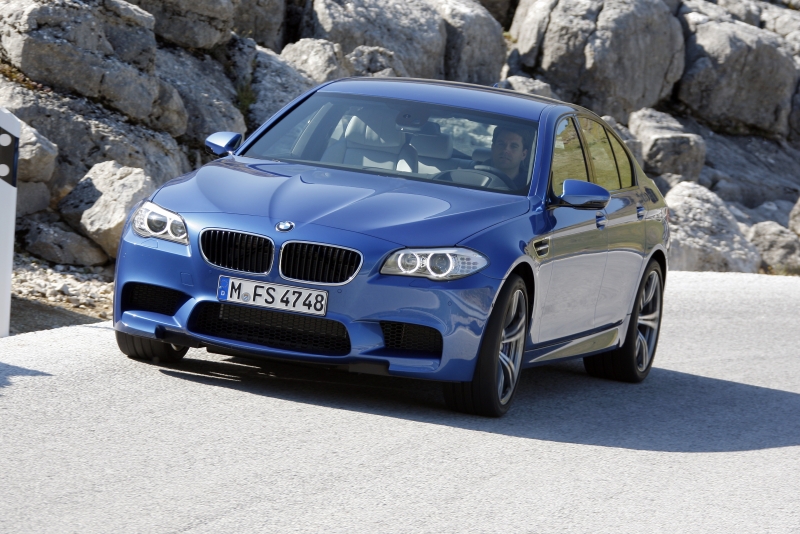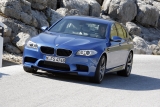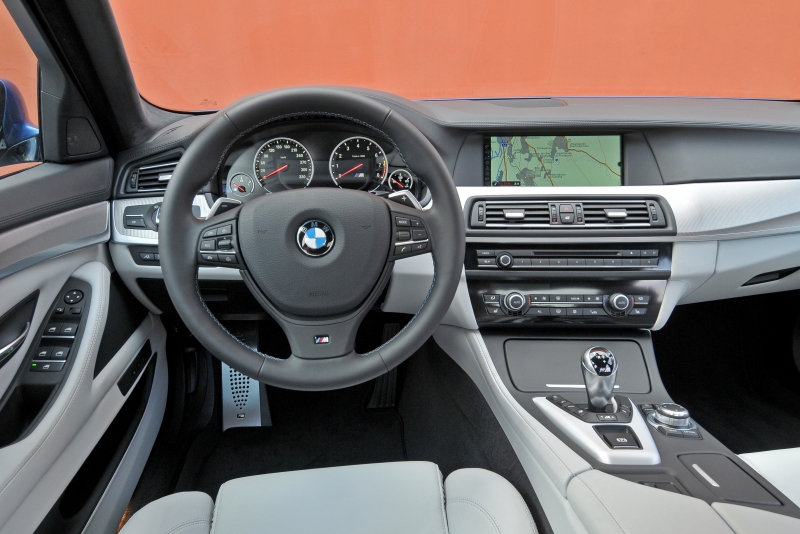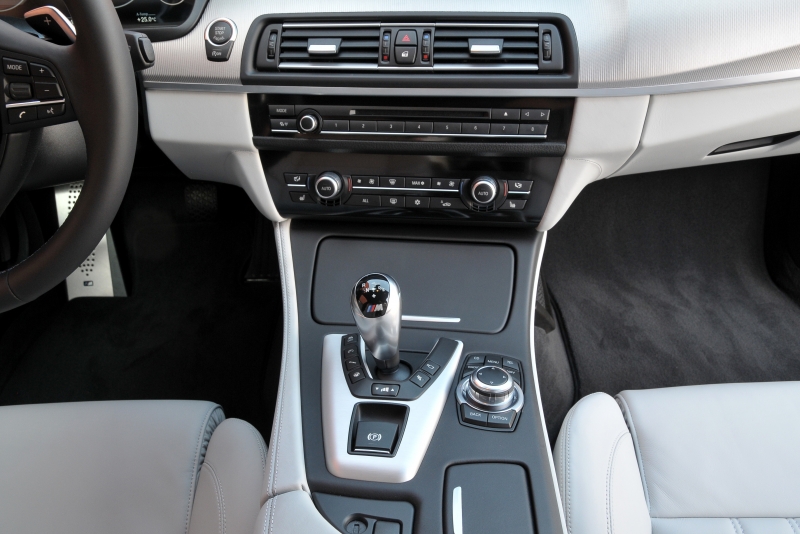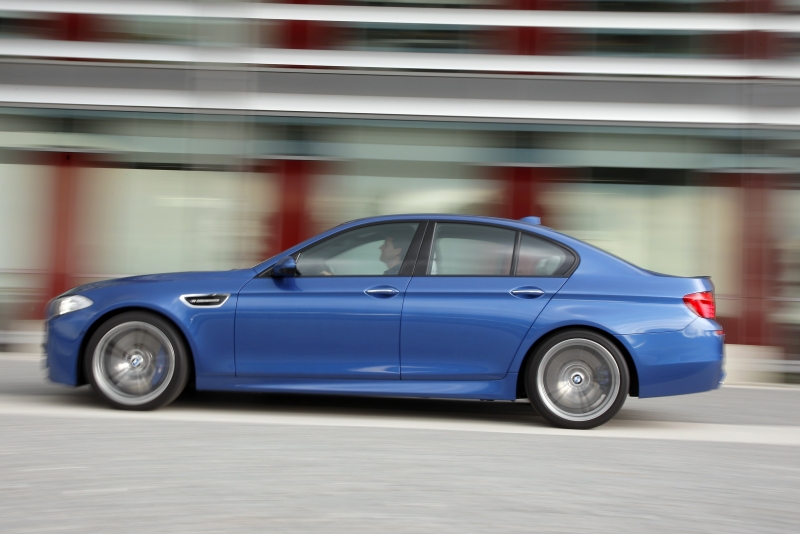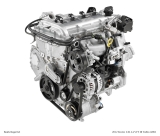Need Help?
2013 BMW M5 Base 4dr Sedan
Trim Info:
Rear Wheel Drive, Sedan
Other Trims
Do you own this car?
Estimated Mileage
Miles
Estimated Mileage
Miles
Enter current mileage for most
accurate info about this vehicle
accurate info about this vehicle
Track Your Service Records
Get Recall Alerts
Get Updated Value Estimates on Your Car.
Expert Reviews
January 25, 2012 by Basem Wasef
BMW builds all manner of performance-oriented SUVs, sedans, and coupes, in a dizzying variety of shapes and sizes. But the core of the manufacturer's soul is their "M" division, an in-house tuning shop whose sole purpose is to imbue the Bavarian brand with race-inspired acceleration, handling, and braking.
The evolution of the "M" mission has changed course subtly since the M1 first launched the sub-brand in 1978. Offerings like the edgy E30-era M3 (1988-1991) and burbly E39-era M5 (1998-2003) attracted a cult following among weekend autocrossers, but a creeping sense of civility also found its way into the cars. That sense of newfound approachability alarmed the hardcore purists, but it also opened the "M" brand to a new breed of car buyers.
The all-new 2013 BMW M5 offers a comprehensive—if controversial—answer to would-be critics of the fabled "M" brand. How does the M5 address the issues burning in the hearts of enthusiasts who seek an ultra-high performance, five-passenger sedan? To find out, we tested the latest M5 on both road and track.
What's to Like
BMW's newest M5 should prove remarkably satisfying to both performance junkies and luxury fanatics; it delivers pavement bruising acceleration and sports car-like handling with enough comfort to make an all-day drive an event to look forward to. A 30 percent increase in fuel economy helps assuage those gas pump pains.
BMW's newest M5 should prove remarkably satisfying to both performance junkies and luxury fanatics; it delivers pavement bruising acceleration and sports car-like handling with enough comfort to make an all-day drive an event to look forward to. A 30 percent increase in fuel economy helps assuage those gas pump pains.
What's Not to Like
Thanks to its outrageous, computer-perfected twin-turbocharged capabilities, the BMW M5 is so good at achieving stellar performance numbers that it sometimes isn't quite as driver-involved as it could be. We wish BMW could have tapped into some of the personality quirks that made its early M cars so entertaining to drive, even at slower speeds.
Thanks to its outrageous, computer-perfected twin-turbocharged capabilities, the BMW M5 is so good at achieving stellar performance numbers that it sometimes isn't quite as driver-involved as it could be. We wish BMW could have tapped into some of the personality quirks that made its early M cars so entertaining to drive, even at slower speeds.
Driving Impressions
Everything from steering effort and shift points to throttle response and suspension damping can be adjusted by the driver, and in its most conservative settings the BMW M5 moves through space with surprising understatement. Acceleration is effortless but not urgent, and the transmission shifts through each of its seven gears with ease in D1 mode, sometimes shifting so early that you wish it lingered in each cog a little longer. But bury the throttle—especially in more aggressive settings—and the M5 transforms into a stunningly fast machine.
Everything from steering effort and shift points to throttle response and suspension damping can be adjusted by the driver, and in its most conservative settings the BMW M5 moves through space with surprising understatement. Acceleration is effortless but not urgent, and the transmission shifts through each of its seven gears with ease in D1 mode, sometimes shifting so early that you wish it lingered in each cog a little longer. But bury the throttle—especially in more aggressive settings—and the M5 transforms into a stunningly fast machine.
On both twisting highways and technical racetracks, the M5 responds to steering input with immediate sensory gratification, thanks in part to the hydraulic arrangement that replaces the electric setup on the standard 5-series. Turn-in is responsive enough to make you forget you're driving a sedan, and the chassis feels stable and secure as the M5 approaches mid-corner. The twin-turbo V-8's torque peak begins as early as 1,500 rpm and doesn't quit until 5,750 rpm, offering a meaty stretch of twist that can easily rectify any slight traces of understeer with a brief stab of the accelerator. Similarly, with sufficient throttle input the tail slides out eagerly in more permissive stability control settings. But the M5's impeccably approachable manners make it only as dramatic on the track as the driver chooses; with its tarmac-compressing acceleration, tenacious grip, and seatbelt-snapping brakes, the M5 feels like it can manage almost anything you dish out at the track.
Back on the road, hours of driving reminded us of the M5's startlingly mild personality traits. Unperturbed by aggressive inputs, this sedan provides a quiet (if slightly firm) ride that transcends the brutal G-forces delivered at the track.
Engine and Drivetrain
Here's where the M5 excels: delivering pavement-pounding performance, despite its four-door layout and curb weight in excess of 4,000 pounds. The M5 is motivated by a twin-turbocharged V-8 that produces 560 horsepower and 500 lb-ft of torque, an uprated version of the mill also found in the X5 M and X6 M. Power is transferred to a dual-clutch seven-speed transmission which meets an active differential that optimizes how torque is distributed to each of the rear wheels. The M5's drivetrain was dropped nearly an inch in order to yield a lower center of gravity for enhanced maneuverability.
Here's where the M5 excels: delivering pavement-pounding performance, despite its four-door layout and curb weight in excess of 4,000 pounds. The M5 is motivated by a twin-turbocharged V-8 that produces 560 horsepower and 500 lb-ft of torque, an uprated version of the mill also found in the X5 M and X6 M. Power is transferred to a dual-clutch seven-speed transmission which meets an active differential that optimizes how torque is distributed to each of the rear wheels. The M5's drivetrain was dropped nearly an inch in order to yield a lower center of gravity for enhanced maneuverability.
Green Evaluation/Gas Mileage
You'll never confuse the M5 with a Prius, but BMW does deserve credit for engineering a 30 percent improvement in fuel economy over its predecessor, a V-10-powered, 8,250 rpm Formula 1 wannabe. The benefits come despite a 10 percent gain in power, and can be credited largely to the new mill's twin-scroll, direct-injected turbocharger, the dual-clutch transmission, and the incorporation of auto start/stop technology. BMW has reduced fuel stops by switching the gas tank from plastic to steel; the thinner gauge offers greater capacity which, along with the increased fuel economy, helps increase cruising range by 50 percent.
You'll never confuse the M5 with a Prius, but BMW does deserve credit for engineering a 30 percent improvement in fuel economy over its predecessor, a V-10-powered, 8,250 rpm Formula 1 wannabe. The benefits come despite a 10 percent gain in power, and can be credited largely to the new mill's twin-scroll, direct-injected turbocharger, the dual-clutch transmission, and the incorporation of auto start/stop technology. BMW has reduced fuel stops by switching the gas tank from plastic to steel; the thinner gauge offers greater capacity which, along with the increased fuel economy, helps increase cruising range by 50 percent.
Vehicle Details
Features and Technology
The latest BMW M5 has all the bells and whistles you'd expect in a premium luxury sedan: internet access, fully-integrated smart phone functionality for Facebook and Twitter, real-time traffic, and the usual array of lane departure/high-beam assist/rear-view camera doodads.
The latest BMW M5 has all the bells and whistles you'd expect in a premium luxury sedan: internet access, fully-integrated smart phone functionality for Facebook and Twitter, real-time traffic, and the usual array of lane departure/high-beam assist/rear-view camera doodads.
Some of the M5's most curious features are like Easter Eggs buried deep beneath the car's surface. For instance, because of the turbocharged engine's inherent quietness, BMW engineered a system in which a computer interprets the rpms, load, and gear selection, and routes a simulated exhaust note through the car's six-speaker stereo system. Other interesting features include M5's night vision system with pedestrian detection, and the heads-up display which projects key instrumentation info onto the windshield. And finally, the M Driver's Package boosts top speed from 155 mph to 190 mph.
Interior
Though littered with model-specific M badges and trim, the BMW M5's cabin isn't an exceptionally sporty or uncompromising interior. A patterned "Trace aluminum" trim finishes the dashboard and doors, offering a purposeful but pleasant feeling. An Alcantara headliner complements soft Merino leather seats, while M-specific touches include special mode selector buttons on the steering wheel and near the shifter. While the iDrive controller, 10.2-inch control screen, and black-panel instruments are familiar features for those acquainted with late model BMWs, the M5's overall mood is one of restrained but ergonomically sound interior design.
Though littered with model-specific M badges and trim, the BMW M5's cabin isn't an exceptionally sporty or uncompromising interior. A patterned "Trace aluminum" trim finishes the dashboard and doors, offering a purposeful but pleasant feeling. An Alcantara headliner complements soft Merino leather seats, while M-specific touches include special mode selector buttons on the steering wheel and near the shifter. While the iDrive controller, 10.2-inch control screen, and black-panel instruments are familiar features for those acquainted with late model BMWs, the M5's overall mood is one of restrained but ergonomically sound interior design.
Exterior
If the standard-issue 5-series is styled like a subtly buttoned-down sedan, the M5's exterior treatment comes across as its huskier, more assertive spinoff. Flared wheel wells house bigger 19-inch wheels clad with staggered tires, engine vents (aka, "M Gills") break up the otherwise elegant profile, and more aggressive details include a rear diffuser, spoiler, and bigger front air intakes. Closer inspection reveals M-specific brake rotors, side skirts, and side mirrors. Though it's unquestionably manlier looking than its more pedestrian 5-series stablemates, the M5's styling is by no means over the top—and perhaps more crucially, this übersedan looks far less fast than it actually is.
If the standard-issue 5-series is styled like a subtly buttoned-down sedan, the M5's exterior treatment comes across as its huskier, more assertive spinoff. Flared wheel wells house bigger 19-inch wheels clad with staggered tires, engine vents (aka, "M Gills") break up the otherwise elegant profile, and more aggressive details include a rear diffuser, spoiler, and bigger front air intakes. Closer inspection reveals M-specific brake rotors, side skirts, and side mirrors. Though it's unquestionably manlier looking than its more pedestrian 5-series stablemates, the M5's styling is by no means over the top—and perhaps more crucially, this übersedan looks far less fast than it actually is.
Market Segment and Pricing
The 2013 BMW M5's price has yet to be announced, but if ends up anywhere near the estimated MSRP of $90,000, it should offer direct competition to the 518 horsepower Mercedes-Benz E63 AMG, which currently runs a cool $88,900. More affordable competitors include the 510 hp Jaguar XF-R ($79,600) and the 556 hp Cadillac CTS-V ($63,215.) Though the latter choices certainly deserve some sort of bang-for-buck award, the German contenders are front-runners in the cost-no-object arena of high-powered sedans masquerading as supercars.
The 2013 BMW M5's price has yet to be announced, but if ends up anywhere near the estimated MSRP of $90,000, it should offer direct competition to the 518 horsepower Mercedes-Benz E63 AMG, which currently runs a cool $88,900. More affordable competitors include the 510 hp Jaguar XF-R ($79,600) and the 556 hp Cadillac CTS-V ($63,215.) Though the latter choices certainly deserve some sort of bang-for-buck award, the German contenders are front-runners in the cost-no-object arena of high-powered sedans masquerading as supercars.
What We Think
The 2013 BMW M5 is a staggering automotive achievement because it so delicately straddles the line between supercar performance and luxury car comfort. It's alarming fast when it needs to be, soothingly quiet while cruising, and eminently approachable at its rather elevated limits. Though we harbor some concerns about the potential longevity of its complex electronic systems and driver aids, if we were in the tax bracket that affords near six-figure automotive purchases, this is one high-performance treat that would be hard to resist.
The 2013 BMW M5 is a staggering automotive achievement because it so delicately straddles the line between supercar performance and luxury car comfort. It's alarming fast when it needs to be, soothingly quiet while cruising, and eminently approachable at its rather elevated limits. Though we harbor some concerns about the potential longevity of its complex electronic systems and driver aids, if we were in the tax bracket that affords near six-figure automotive purchases, this is one high-performance treat that would be hard to resist.
|
|
Similar Articles
Your Local Mechanics


